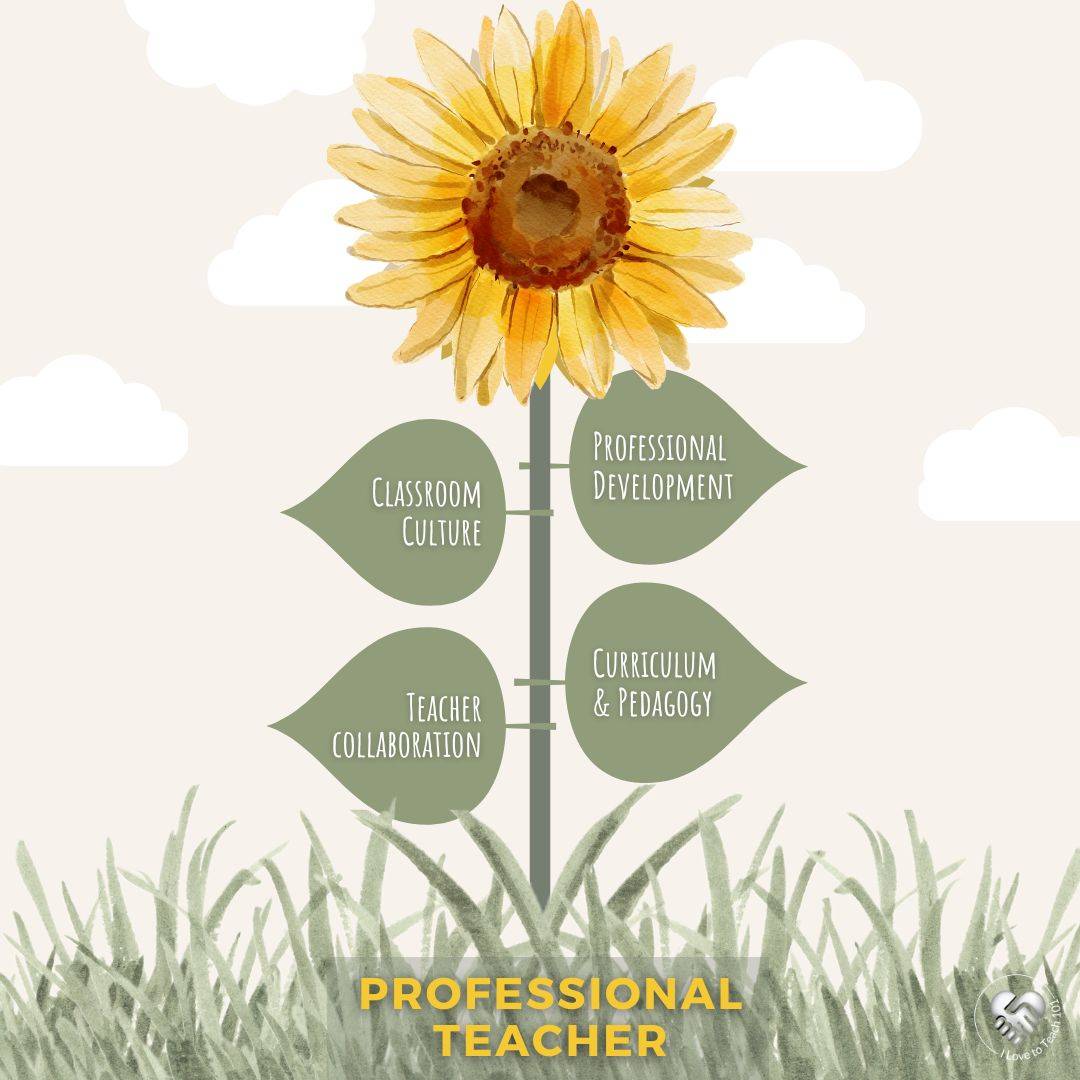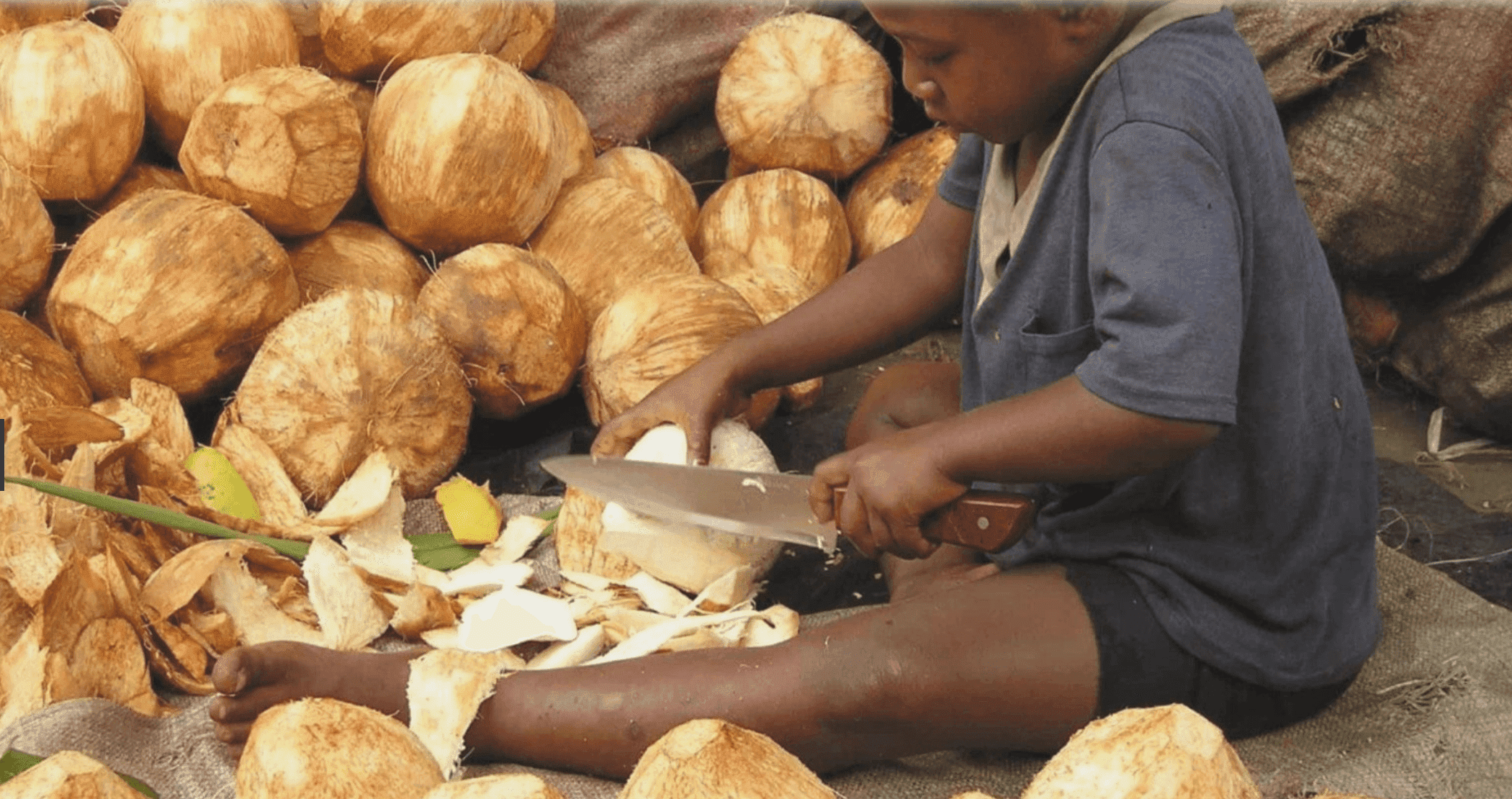Why I Love To Teach and Help Teachers Thrive

🌻 Hi, I’m Sylvia
From struggling student to classroom creator, I’ve spent 30+ years learning how to help teachers thrive. This is the story of how it all began — and why I still love to teach.
If you’ve just grabbed the free Classroom Mood Board, welcome! You’re in exactly the right place. That little tool is part of a much bigger story — and it all started here.
I grew up in England, trained as a teacher in Australia, and became a creative classroom educator with a love for art, organisation, and student wellbeing. With over 20 years as a primary teacher and now a K–12 Art specialist, I’ve seen firsthand how much teachers juggle — and how powerful the right tools can be.
I’m also the founder of I Love To Teach 101. I built the site to support other teachers with practical tools and creative inspiration. Over the years, I’ve taught in Aussie and Solomon Island classrooms, mentored new teachers, and developed resources that blend classroom organisation with creativity and care.
I’ve served as a school principal, completed my Bachelor of Education with Honours, and taught everywhere from busy urban schools to remote island communities.
This is the story of how a shy girl who once struggled in school found her voice, her mission, and her calling — to help teachers stay inspired, organised, and connected.
Every teacher’s journey starts somewhere unexpected. Mine began with a simple prayer in a UK Sunday School classroom. Here’s how it all unfolded. . .
RAY SKINNER
“Our back garden view of Savo, the Volcano Island.
🌻 An Adventure
Where it all began with a simple prayer in a Sunday School classroom — and led to 72 wiggly little learners in a school I never expected to teach in.
The week before we left the UK for the Solomon Islands, I was packing up my last Sunday School class. As I stacked chairs and packed up, I thought, “Lord, it would be really nice if I could teach in the Solomon Islands.”
But I didn’t think it was possible. I had no teaching degree.
In March 1986, my husband Ray and I arrived in Honiara. He began working as Director of Pharmacy with British Overseas Aid. I asked around about where I could help and was directed to Chung Wah, a Chinese School in China-Town, Honiara. 90% of its students and teachers were Solomon Islanders.
That’s how I began volunteering in a Foundation class of 72 little learners, for one hour each day. To help me, I completed a distant learning Montessori course, achieving a Montessori Diploma (London).
Eventually, the school board secured a work permit for me to teach full-time for five years.
🌻 Teens English
When traditional schooling wasn’t an option, we created our own. Teaching English to teenagers who had never been to school lit a new path forward — for them and me.
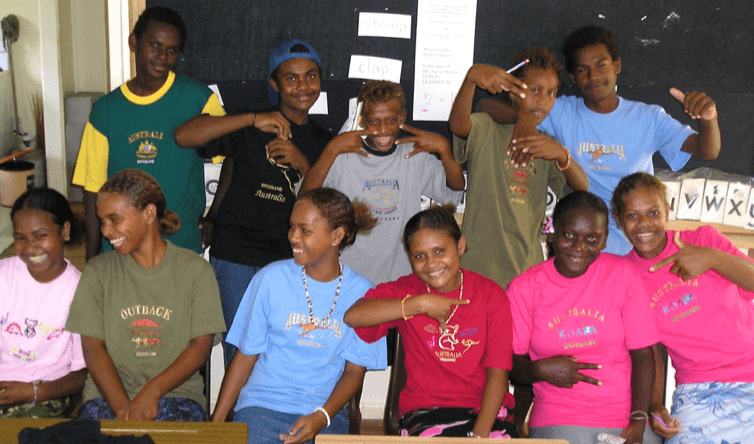
In the Solomon Islands, if your parents can’t pay the school fees you can’t attend school so I started an English programme for teenagers who had not been to school.
Eileen Fomani, our first student teacher, who left school with nothing — begged three times to watch how I taught the Teens group. I hated being watched so at first I said no but she persevered.
Now, fully qualified teachers beg Eileen to share her secrets for teaching English.
Eileen Fomani – our first trainee, talking to parents about their students learning.
🌻 A Brighter Future
After formal teacher training in Australia, I returned to the Solomons. With new qualifications and old experience, we built a school from the ground up — one student at a time.
After returning to the UK in 1992, we later emigrated to Western Australia in 1995, where I completed my Bachelor of Education with Honours. I taught in a local primary school in Perth, for several years before we returned overseas.
In 2002, Ray and I went back to the Solomon Islands — this time as Director of Pharmacy with Australian Volunteers (AV). Ray supported the national health system, and I brought both classroom experience and formal training to my new role in education.
We partnered with our local church to build a small primary school. The school officially opened in 2005. It wasn’t glamorous. The buildings were bare, supplies were limited, and construction continued for the first year while we taught.
I served as both principal and Foundation teacher. I also wrote school policies, developed curriculum, trained the accountant, and mentored new teachers while teaching all day.
Despite the challenges, our students went on to graduate in the top 10% of the country. Proof that creativity, care, and a little resilience can build something lasting.
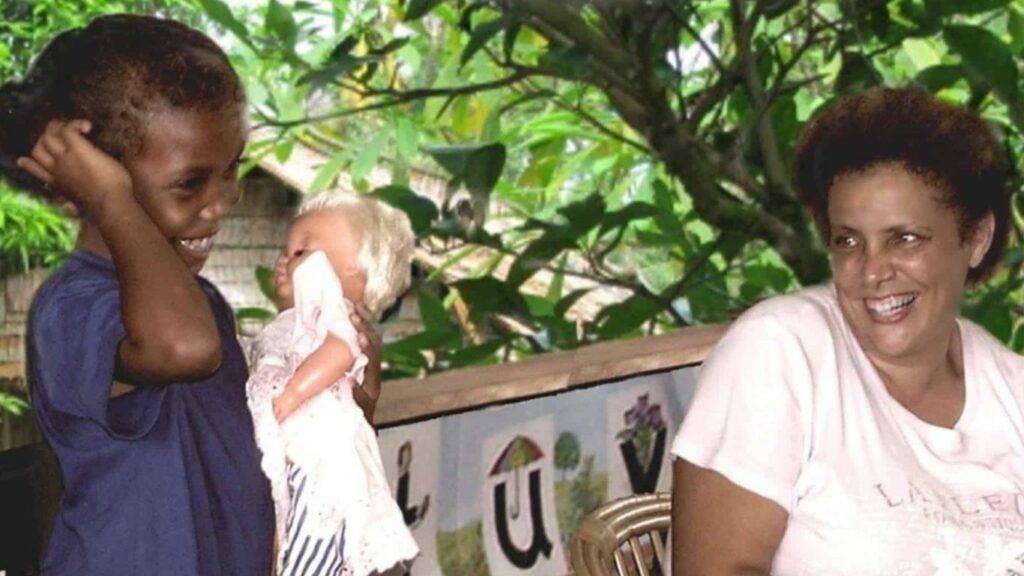
🌻 Build and Teach
We poured concrete, dodged monsoons, and taught lessons through the noise of power tools. It wasn’t polished, but it was powerful.
By the time the school opened in 2005, the building was just the beginning. Classrooms were still bare. Floodwaters swept through during the rainy season, often turning the path to school into a makeshift river. A drainage system had to be dug around the entire site, while classes were in full swing.
Teaching often happened alongside the building work. Some days I’d be mid-lesson when someone would burst in, “The digger’s stuck, the fuel’s gone, and we need help before it drives off for good!” These interruptions became part of the rhythm.
Despite the challenges, our students went on to graduate in the top 10% of the country.
🌻 Training Teachers
With few formal qualifications available, we turned our school into a grassroots teacher training hub.
The teachers I was training were mostly school leavers — passionate, willing, and learning by doing. They observed my lessons just like Eileen did, then each afternoon, I held teacher training sessions along with theoretical and practical assignments to complete. Slowly they transitioned from taking small groups in my class, into leading their own classes.
A year later, four of our trainee teachers went to Teachers College for two years and graduated top of their class. The College began sending as many of their students to us as they could.
It wasn’t just a school anymore. It was a teacher training ground where teachers thrived.
Gabriel—one of our star trainee teachers—graduated top of his Teachers College class and now teaches his class, complete with Nemo fish models floating from the ceiling.
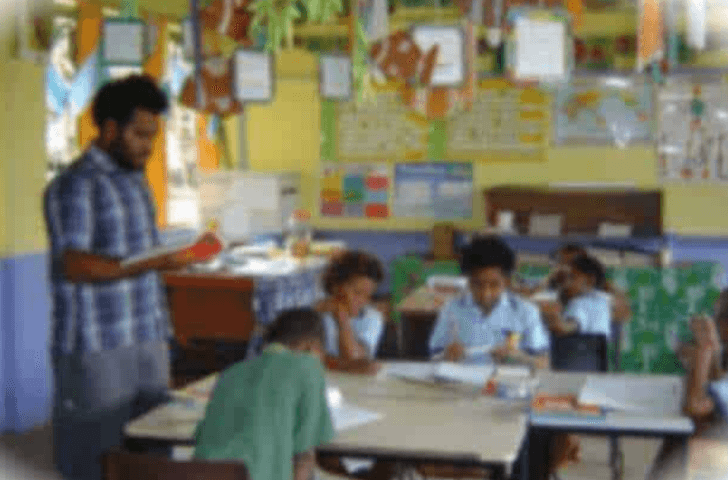
🌻 After School . . .
Learning didn’t stop at the bell. We sewed on the beach, built skills in IT, and helped ex-militants stitch their way to self-reliance — literally.
After each school day, I ran IT skill-building sessions for young men who’d missed out on education — and some were former militants trying to rebuild their lives.
During the school holidays, we would visit remote villages. I’d get on a boat with a few rolls of material, simple sewing patterns, sewing tools and a few hand sewing machines.
The programme always ran for three to five days, mostly for men, learning to make tailored shorts and trousers, with side pockets, zipper and a waistband—on the beach, of course.
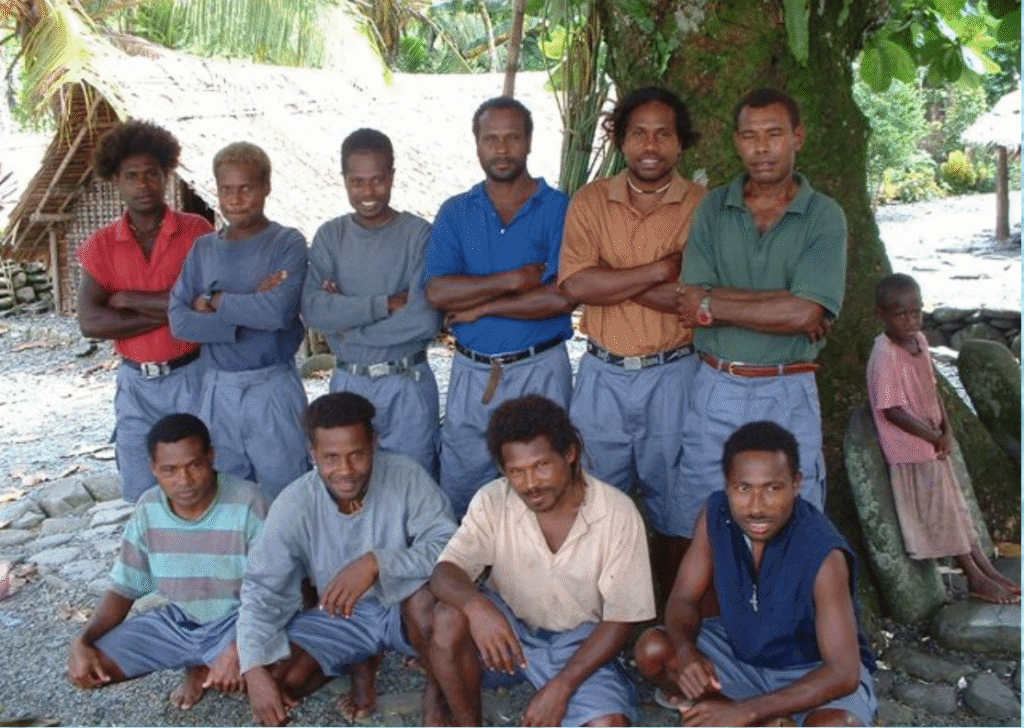
Here’s the group who were sewing on the beach below, wearing their creations proudly.
A few went on to create their own tailoring business. Give a man a fish, and he eats for a day. Teach a man to fish, and he eats for a lifetime. Don’t stop teaching!
Sylvia teaching ex-militants to sew tailored shorts in just 3 days on the beach.
🌻 Student Stories
I created a mood board project to help students explore their identity.
One of the most powerful things we can do as teachers is help students understand and express who they are. So, I created a free Mood Board Template & Teacher Guide — to support students in sharing their own journeys through visual storytelling.
You’ll see my mood board below — it captures my story. Use it with your class or make your own, to spark connection, creativity, and a strong sense of identity.
🌻 Teacher Guide
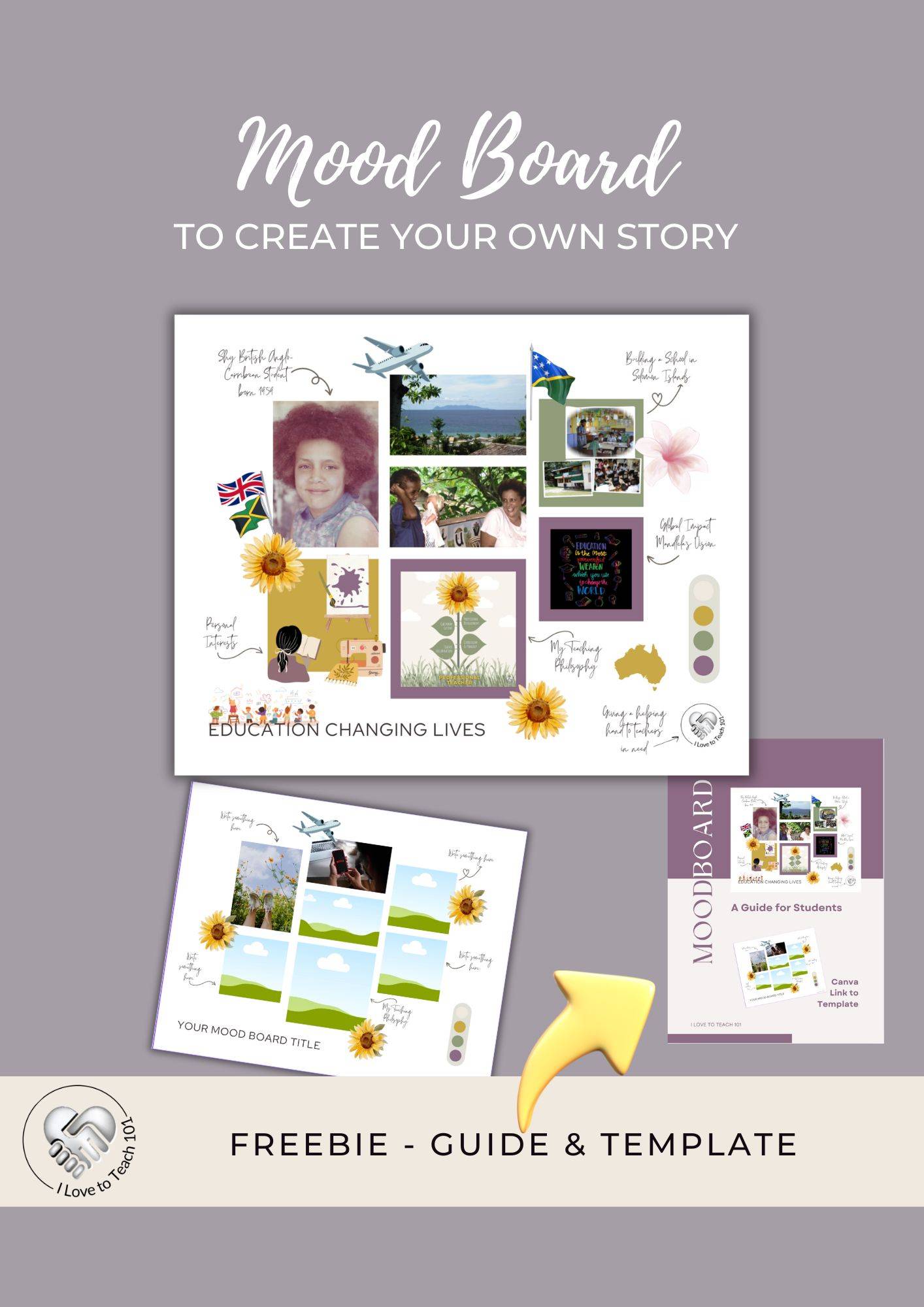
Try it with your class: Download the FREE Mood Board Template & Guide
🌻 Free Mood Board
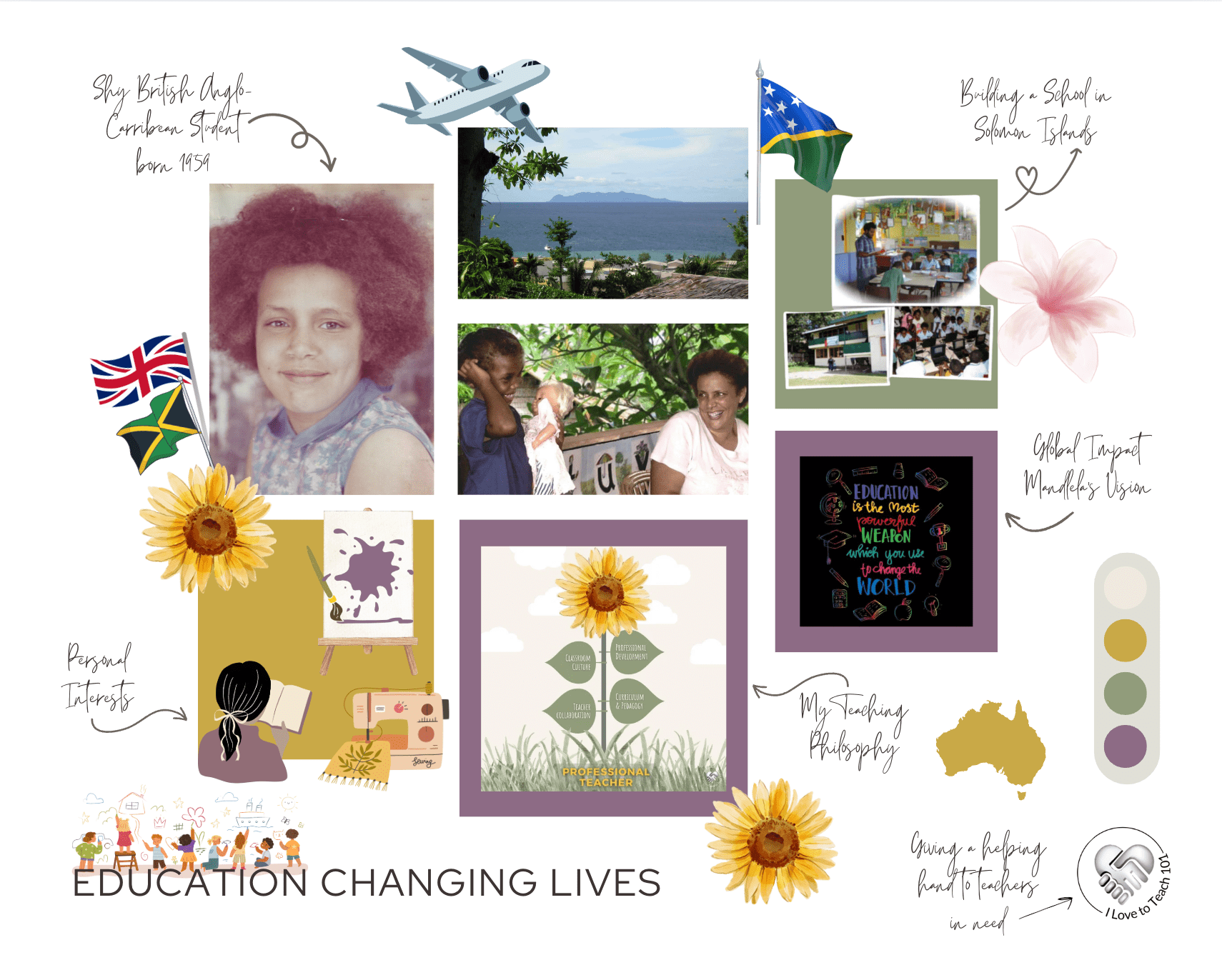
My Mood Board example
📚 Create your personal journey
🤝 Help students explore theirs
Some incredible teacher friends in the Solomon Islands
🌻 Helping Teachers Thrive
How ILTT supports creativity, organisation, and real classroom impact.
I created I Love To Teach 101 (ILTT) to help teachers stay inspired, not just stay afloat, while helping teachers thrive to create classrooms that transform lives.
I’ve always been inspired by Nelson Mandela’s words — “Education is the most powerful weapon which you can use to change the world.” This ethos is in everything we do. What I believe about education’s transformative power drives every resource we create and every teacher we support to help teachers thrive.
Want to know how these experiences have shaped my classroom approach? Here are a few insights from my journey.
🌻 Ready to Connect
From struggling in school myself to teaching in different countries, I’ve learned how powerful connections can be.

If you’re looking for tools and ideas to help you thrive, I’d love to welcome you inside The Drop — my free monthly newsletter with practical tools and creative classroom strategies. It’s where teachers find practical support and creative inspiration, one sunflower at a time.

